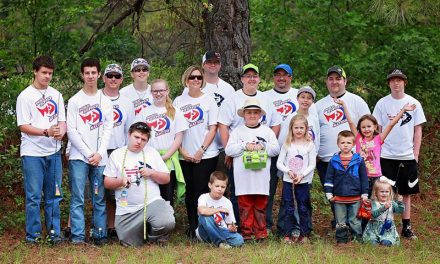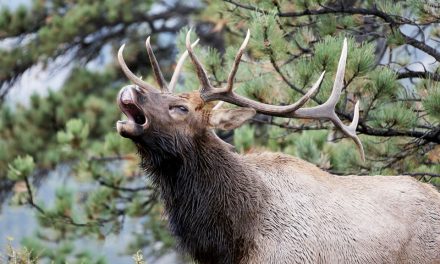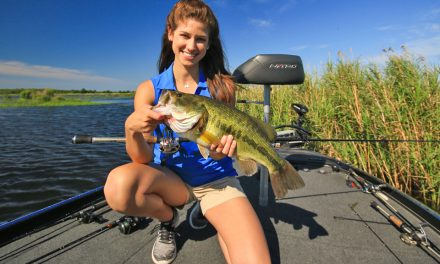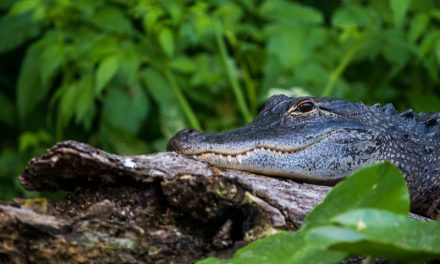These thoughts and concerns are often overlooked by novice hikers. I was one of those hikers who didn’t give safety a second thought when I started. However, after a couple of adventures on larger hikes, I discovered the need to take precautions. I have witnessed people being rescued out of the Grand Canyon, sightseers getting too close to wildlife in Yosemite National park, and a close encounter with a moose while hiking in Denali National Park. Why? Because inadequate precautions were taken before and during the hikes.
For that hike in Denali National Park, I knew I would need to do some preparation before my trip. First and foremost, I had to think about bears! I live in the Midwest where domestic animal encounters are more dangerous than wildlife while hiking. I didn’t want to travel with my sidearm, so I knew I would need to find alternate safety solutions.
I researched and sought advice about bear encounters from those in the area. (Keep in mind, if you post general questions on social media, the advice you receive will vary greatly, depending on geographical location and experience levels.)
What I learned is that safety measures during bear encounters depend on the area, type of bear, and seasons. Some people suggest being quiet and moving slowly away, while others advise you to make noise and act big, flagging bears away. For example, black bears in some areas rarely attack people and tend to avoid human contact. However, this is not necessarily the case in other parts of the country and certainly not true if you get too close to a sow and her cub!
After a whirlwind of advice, I decided to follow the instructions on the signs in the park.
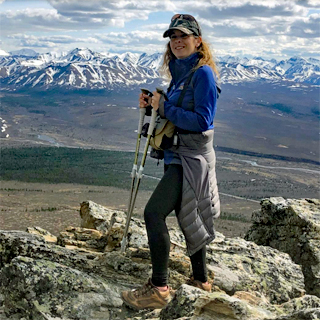 The same is true when seeking advice about poisonous plants and biting or stinging bugs. While we mainly worry about poison ivy, poison oak, tick bites, bee stings, and mosquito bites in the Midwest, there are various other plants and bugs to avoid in other regions. For example, Alaska has 35 different species of mosquitoes! I know because I had to research what caused the golf ball-size knot on my temple that left me looking like the elephant man! By the next morning, the left side of my face was swollen, and I couldn’t open my eye. All of this could have been avoided if I would have taken precautions. A little bug spray and a thermacell could have helped me avoid bug bites.
The same is true when seeking advice about poisonous plants and biting or stinging bugs. While we mainly worry about poison ivy, poison oak, tick bites, bee stings, and mosquito bites in the Midwest, there are various other plants and bugs to avoid in other regions. For example, Alaska has 35 different species of mosquitoes! I know because I had to research what caused the golf ball-size knot on my temple that left me looking like the elephant man! By the next morning, the left side of my face was swollen, and I couldn’t open my eye. All of this could have been avoided if I would have taken precautions. A little bug spray and a thermacell could have helped me avoid bug bites.
The bottom line is that if you want to enjoy the splendors of the outdoors, there are some key steps to help reduce your risk and ease your concerns:
- Do your research on how to avoid problems in the area you are exploring. Google insects, plants, and animals to avoid in the chosen destination.
- Ask others about safety tips for specific trails in state or national parks. Each park has a website with precautions to follow.
- Know the difficulty level of the terrain you will be hiking, as well as your limitations.
- Pack the essentials, depending on the type and length of your hike: Water, water filter, snacks, bug spray, bear spray/bell, thermacell, hiking poles, emergency kit, cell phone, and portable charger.
- Plan your hike ahead of time, familiarizing yourself with the trail, distance, and map route.
Apps such as AllTrails can help you with these, as well as keep you oriented, give path conditions, estimate the time it will take, and provide real-time trail reviews from other hikers.
There are so many majestic views to explore. A little research and preparation are time well spent. Don’t let fear keep you from enjoying the great outdoors, because when you stop and look around, this life is pretty amazing!
~By Kelly Ott
Facebook | Instagram
As a born and raised city girl from St. Louis, it took Kelly Ott a while to take to the woods and appreciate all that nature has to offer. Occasional fishing and outdoor activities with her family did not turn into a passion until her kids were grown and on their own. At the age of 50, Kelly took up hiking, backpacking, and hunting outside of her Midwest home in Missouri. It was then that she began to seek skills that would foster independence and growth. Kelly’s first serious hike and backpacking trip was an overnight excursion to the bottom of the Grand Canyon. Since then, she has hiked many trails and climbed several mountains. Kelly has also enjoyed hunting everything from prairie dogs and pheasant to elk and bear, soaking in every bit of knowledge about wildlife habits, habitat, and harvesting. When not hunting, her favorite downtime activity is fishing from her kayak in local lakes and ponds. For Kelly, spending time outdoors is more than taking a break from a busy life; it is time to soak in the beauty of nature and reflect on what is important.


